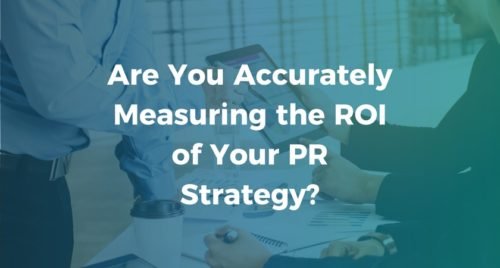Are You Accurately Measuring the ROI of Your PR Strategy?
Cision Bloggers
Many startups and small companies put so much focus on gaining traction and improving their reach that they don’t realize success is more than just a numbers game. Measuring the ROI of a PR campaign goes much deeper than just subtracting money spent from revenue earned.
Thanks to technology, measuring PR in the digital era is completely different than it was a few years ago. The questions for you to answer are which numbers matter and what’s the best way to measure them in relation to your goals?
If you want to get a better picture of your PR efforts, you’ll need to understand the nuances behind the metrics. Here are four ways to do that.
1. Set Flexible Objectives
Before you start analyzing any numbers, you must have something to compare it to. Without a concrete vision in mind, your PR efforts will feel more or less like rolling the dice. Try using the handy acronym S.M.A.R.T.E.R. to help set objectives beforehand.
- S – Specific: First off, your goals need to be precise, not just a vague objective. Decide what your purpose is, then design a PR strategy that will accomplish it with set milestones and KPIs.
- M – Measurable: It’s impossible to determine progress if you have no way of measuring it. Choose numbers that determine victory. Do you want to raise brand awareness? By how much? Do you want 50 new followers every week? 100? 500?
- A – Attainable: While it’s important to dream big, don’t get carried away by setting unrealistic goals. However, be careful not to set the bar too low, as this can easily reduce motivation in your team. Find a balance that works for everyone.
- R – Relevant: Consider whether or not your objective will help your business in the long run. Does this PR strategy line up with the long and short-term goals of the company?
- T – Timely: You will need to set a specific deadline, otherwise you may never reach your goal. Don’t cut yourself short; make sure that it will give your strategy enough time to be effective.
- E – Evaluate: Once your strategy is in place, it’s time to dig into the analytical reports and compare the results to your original goals and objectives.
- R – Re-evaluate: Thought you were done? Think again. Once you’ve crunched the numbers, take time to interpret the data and make the appropriate changes to meet your goals more efficiently.
Although tangible results can come from setting SMART goals, brands need to avoid defining their success solely by how they meet these types of goals.
If you take the time to look at past results and find any patterns, they might give you an opportunity to create a less rigid approach. Instead of using a specific number as a target, you could try using a range, as well as setting either/or objectives and connecting secondary goals to your main ones.
While it may seem counterintuitive to be flexible with your objectives, doing this can help you identify and capitalize on some of your less tangible results. At iSeeCars, we learned that more media coverage — or a goal of getting “x” number of write-ups for one of our independent studies — isn’t inclusive enough. Sometimes we missed that target by a large margin and, even though only a few outlets reported the story, those sites ended up driving the most traffic to us.
2. Pay Attention to Who is Sharing Your Content
Simply measuring the numbers will not give you an accurate representation of your media reach for two reasons. First, it can’t determine the authenticity of those shares. For example, Twitter retweet bots that automatically share content can have a positive impact on your numbers but don’t necessarily improve engagement levels and brand sentiment. Second, the numbers don’t measure the actual perception of that content with your audience.
If you want the most accurate insights, you’ll need to rely on a PR analytics system that records factors like traffic sources, brand mentions and conversion rates in detail.
This information is vital in helping you understand the general perception of your business and the impact of your PR efforts.
3. Evaluate the Pages That Link to You
Knowing which links are driving the highest quality traffic to your platform helps you gauge your online strategy. It’s not the highest traffic numbers that matter. It’s the sources that are bringing in the most visitors that convert.
Compare traffic counts with bounce rates to get a more accurate representation of each link’s value.
The industry average is around 50 percent, so don’t be surprised if this number is fairly high. If you notice a good chunk of your bounce rate is due to a specific keyword or external link, then it may be time to rethink that strategy or even eliminate it, since it’s not bringing in qualified customers.
Continue reading here on the BEYOND PR blog.


